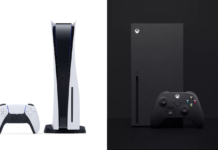
Bungie revolutionized the way consoles handle online play with Halo 2, and their formula since then hasn’t changed all that much. Why change what isn’t broken? In the game industry however, that only flies for so long. It’s been almost three years since the release of Halo 3. Over that time, Bungie has been hard at work developing a shiny new interface for online play in their upcoming title Halo: Reach.
Of all the new features coming to Reach’s matchmaking system, perhaps the most exciting is the Arena Playlist, which is geared toward the hardest of hardcore. This option provides gamers with a more serious Slayer/Team Slayer option that contains a month-based rating system. This mode will also more accurately determine a player’s skill by taking into account assists and kill/death ratios. There are fives tiers (Onyx, Gold, Silver, Bronze, and Steel) and in order to rank in one of them, players will be required to play a certain number of games daily.
<img onerror="this.style.display='none';" src="http://360.kombo.com/images/content/news/matchmaking.jpg"
Reach will have an active roster in which a list – displaying what all of the player’s friends online are doing – will be located right in the game’s main menu. Any friends playing Reach will contain information detailing the match that they are playing, the score and how much time they have left. This eliminates the hassle of constantly accessing the guide to check on friends and will help streamline the process.
One major issue with previous Halo titles can be described as gaming’s version of phone tag. While one player waits for another to finish up his/her match, impatience sets in and he/she joins a match of their own to pass the time. By then the other player has finished their match and now must wait for the first player to finish. Now, with queue-joining, the game will automatically join a player up with their buddy as soon as they become available.

Those who have played Halo 3 are familiar with the voting/veto system. Bungie has completely revamped it, calling it “Veto 2.0“. Before beginning a game, each player will be able to vote on one of four options. The first will contain a map and gametype, while the remaining three serve as alternative gametype possibilities.
Bungie is pulling out the big guns for Halo: Reach. If the screenshots above are any indication, Reach will take the online multiplayer experience to the next level. While it probably won’t revolutionize the medium like Halo 2 did, it will certainly contain one of the most polished and robust experiences out there for shooter fans.
This article only scratches the surface on what Bungie will be offering when the game launches this fall. Expect big things from Reach, and to those that purchased ODST, don’t forget to hop on the beta test bandwagon when the game’s multiplayer makes it’s debut on May 3.










